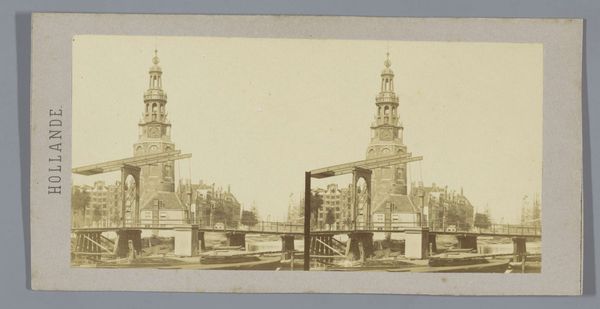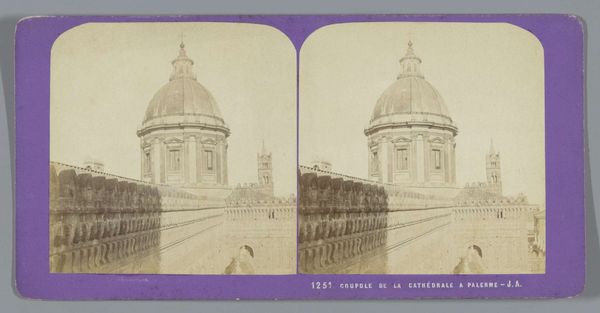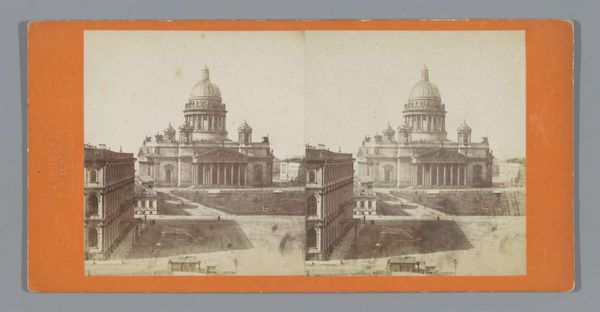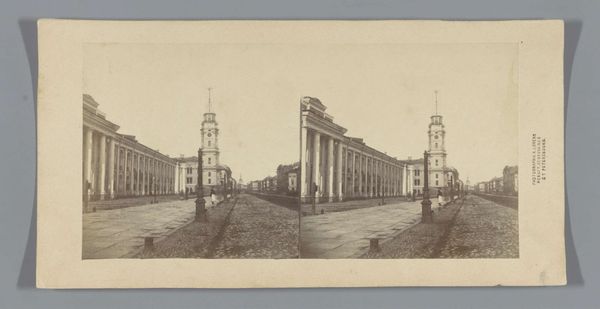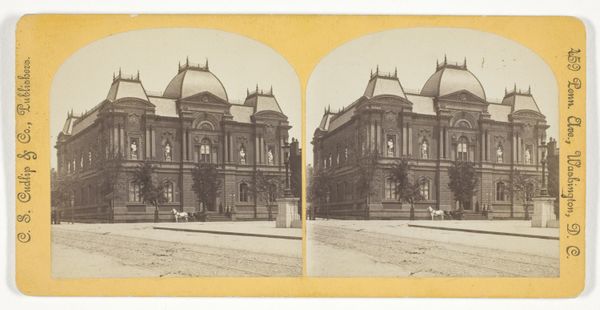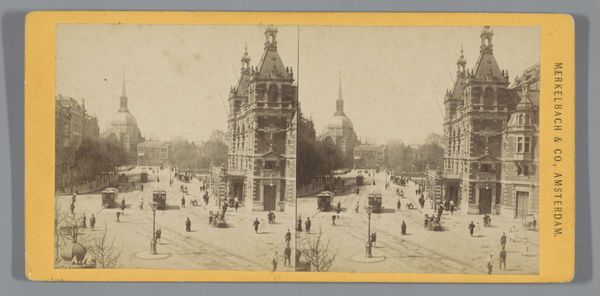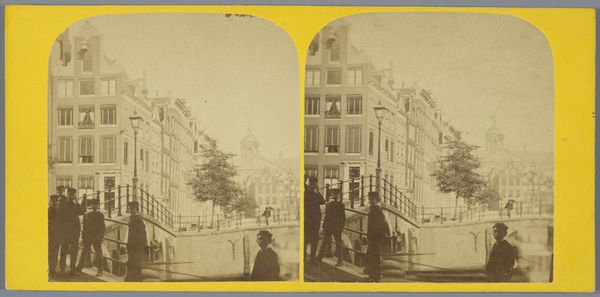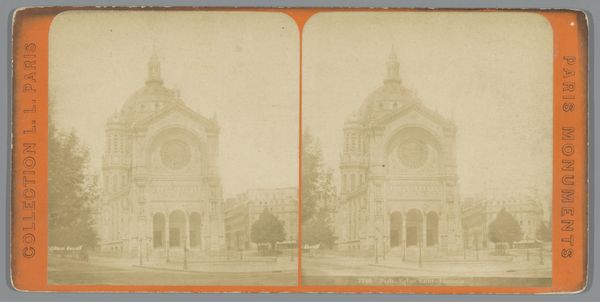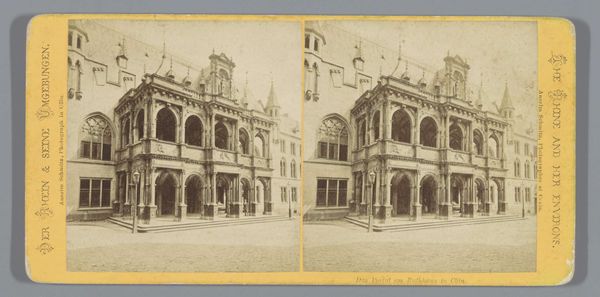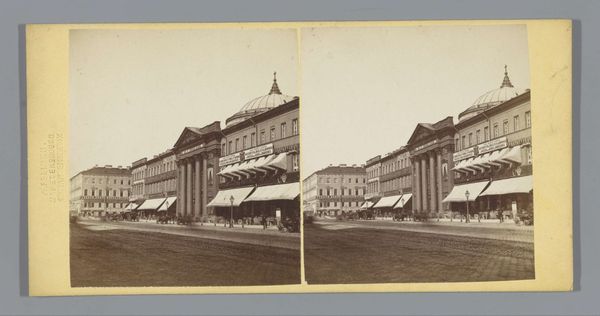
print, photography, gelatin-silver-print
#
dutch-golden-age
# print
#
photography
#
gelatin-silver-print
#
cityscape
#
realism
Dimensions: height 84 mm, width 174 mm
Copyright: Rijks Museum: Open Domain
Curator: Here we have Pieter Oosterhuis's gelatin silver print, "Ronde Lutherse Kerk aan het Singel, Amsterdam," taken in 1859. Editor: Immediately, the overwhelming symmetrical composition jumps out. It's quite rigid, with this massive dome asserting its dominance. There's a certain starkness to it despite the historical context. Curator: It’s fascinating to consider Oosterhuis documenting Amsterdam's architecture. Photography at this time served as both artistic expression and an important historical record. The Lutheran church and its surrounding cityscape capture a pivotal moment in the city’s evolution. The choice of photography brings an immediacy and "truth" to the cityscape as it exists then. Editor: Agreed. It also renders surface textures, like brick, with an uncompromising fidelity. I’m drawn to the interplay between the dome and the sharp lines of the buildings nestled below, a structured dialogue that gives us insight into the city planning of the period. And that elevated walkway - is that part of the Church structure or something else? Curator: It is a pedestrian bridge that crosses Singel canal from an adjacent building, allowing congregants covered access. These details offer invaluable socio-architectural insights, underscoring the intersection of religious life and civic planning. Think about the social implications of making faith this visibly and physically integrated into daily life! The symbolism feels deeply intertwined. Editor: I am sensing, structurally, the photographer seems to emphasize the dome by placing it squarely in the frame—a deliberate compositional choice drawing the eye toward its powerful form. Even though it feels very grounded, the high contrast in tonal range contributes to an evocative feel, which I attribute mainly to how he captures depth and three-dimensionality in such limited color value. Curator: That makes sense; the level of technical control gives the photograph an evocative presence, almost hyper-real despite the muted palette. It’s remarkable. The print becomes both a historical document and a carefully constructed aesthetic statement. Editor: Reflecting on the cityscape, the way the artist frames urban space says so much about a community and time. And I wonder how individuals navigated these spaces every day and in what way. Curator: Exactly. It offers us a glimpse into the collective experience of nineteenth-century Amsterdam through urbanism. Thank you.
Comments
No comments
Be the first to comment and join the conversation on the ultimate creative platform.
